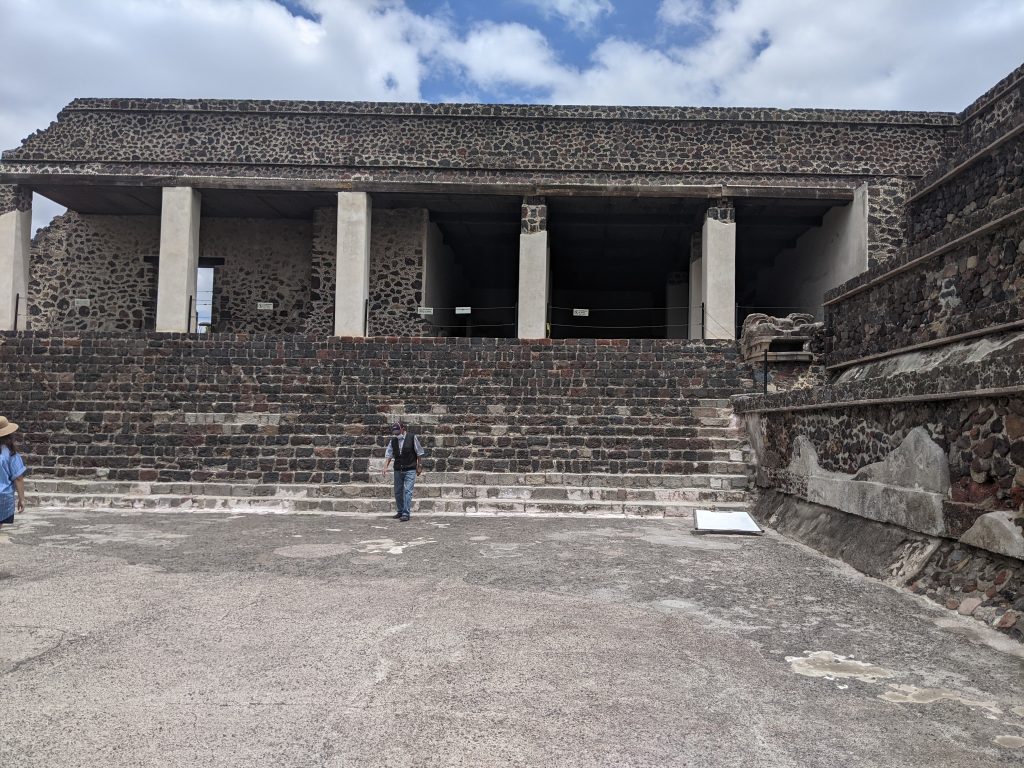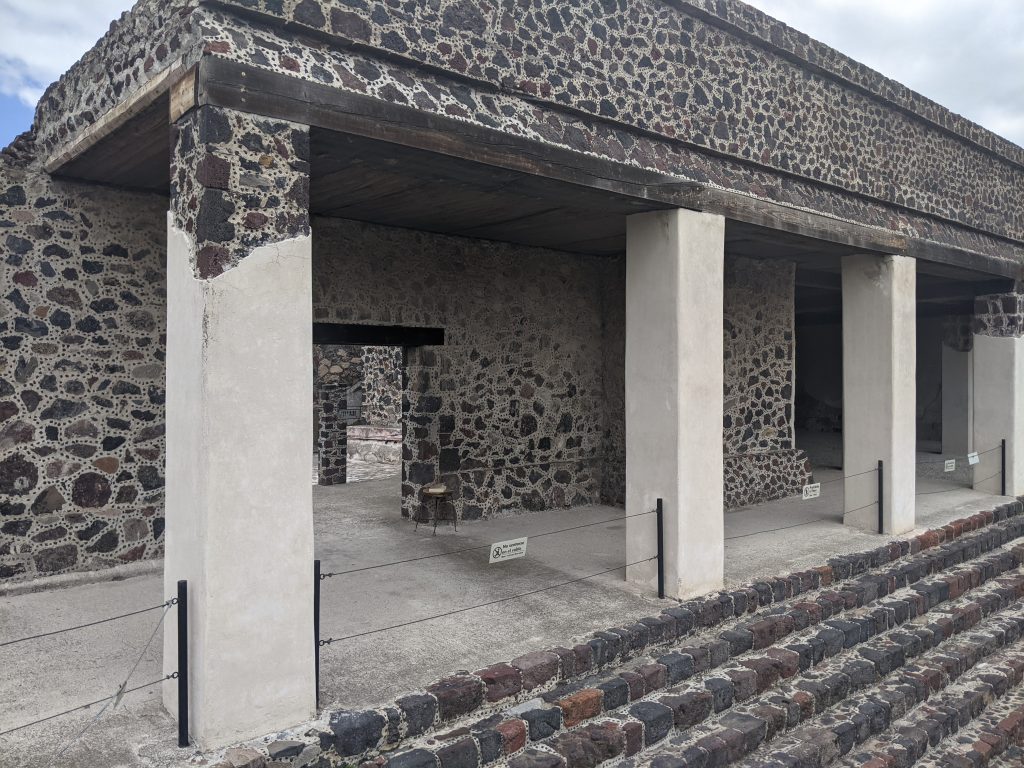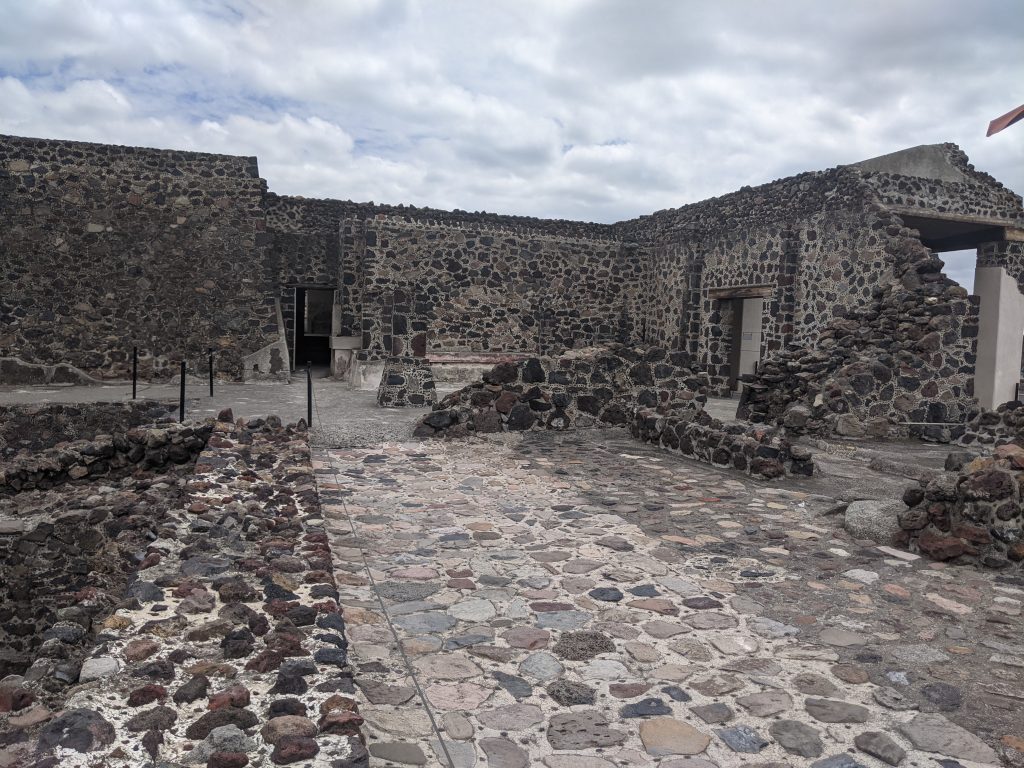Teotihuacan is a massive series of ruins about 75km northeast of Mexico City. The civilization started around 600 BC and from about 200 BC until about 650 AD the city dominated the surrounding area. At its peak it’s estimated that over 150,000 people lived there and it covered over 23 square kilometers. Around 750 AD the city was sacked, burned and virtually abandoned. No one knows exactly why and there are no substantial traces of their language or culture.
When the Aztecs came to power over 500 years later, they considered it a holy place and they gave it the name of Teotihuacan which means “the place where men became gods.” We do not know what the original inhabitants called themselves or their city.
Even now the current 4 square kilometer site is massive. It’s easily the largest area of any of the Mexican ruins I’ve visited. While the buildings themselves don’t have much artistic quality left, you can still see their scale.
A smaller pyramid near the entrance.
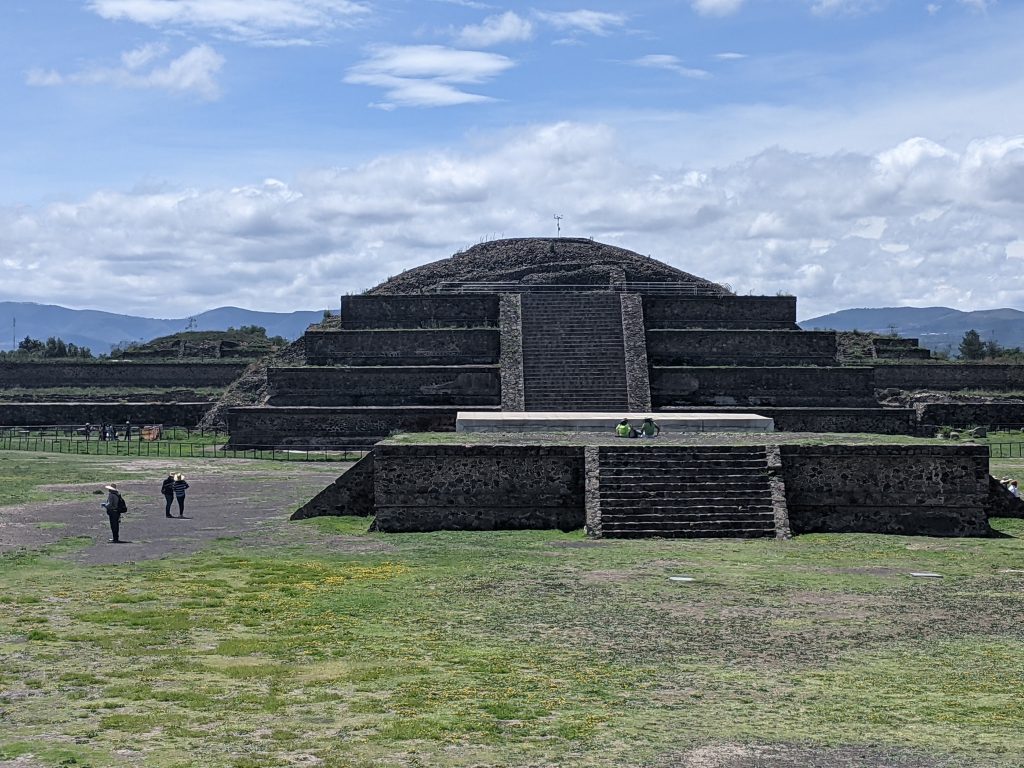
The Piramide de la Luna in the distance, about 2km away. That’s how large the site is.
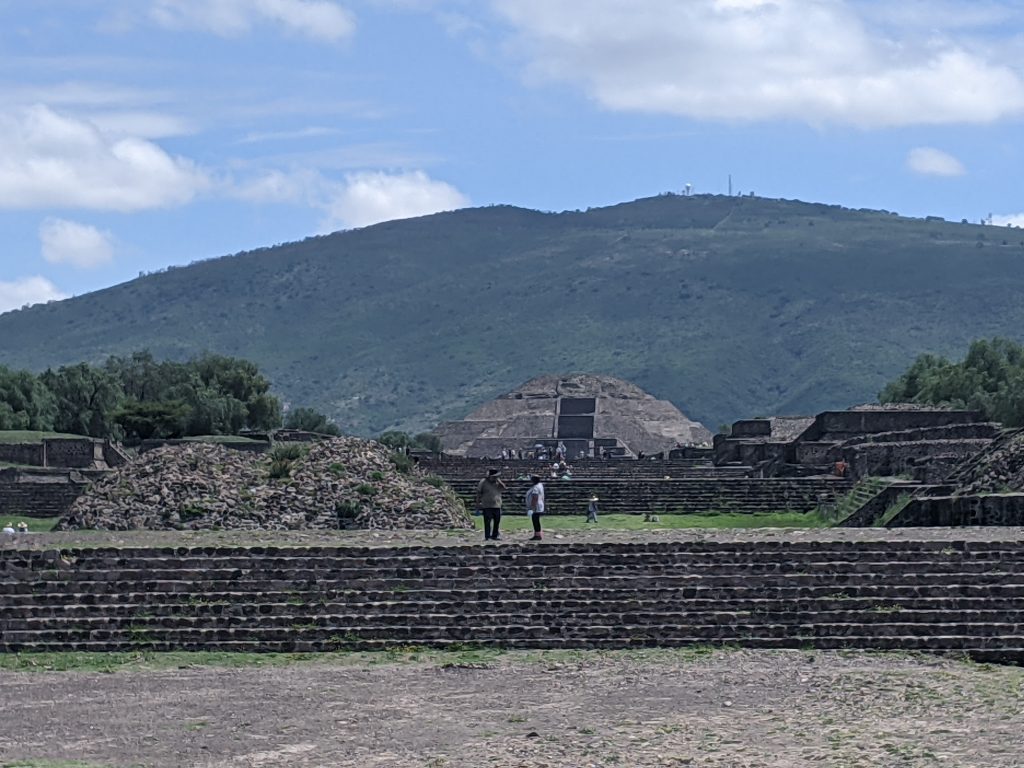
The Piramide del Sol is the second highest ancient building in Mexico at 70m. Its base is almost exactly the same size as the Pyramid of Cheops in Egypt, but the lower angled sides make it much lower.
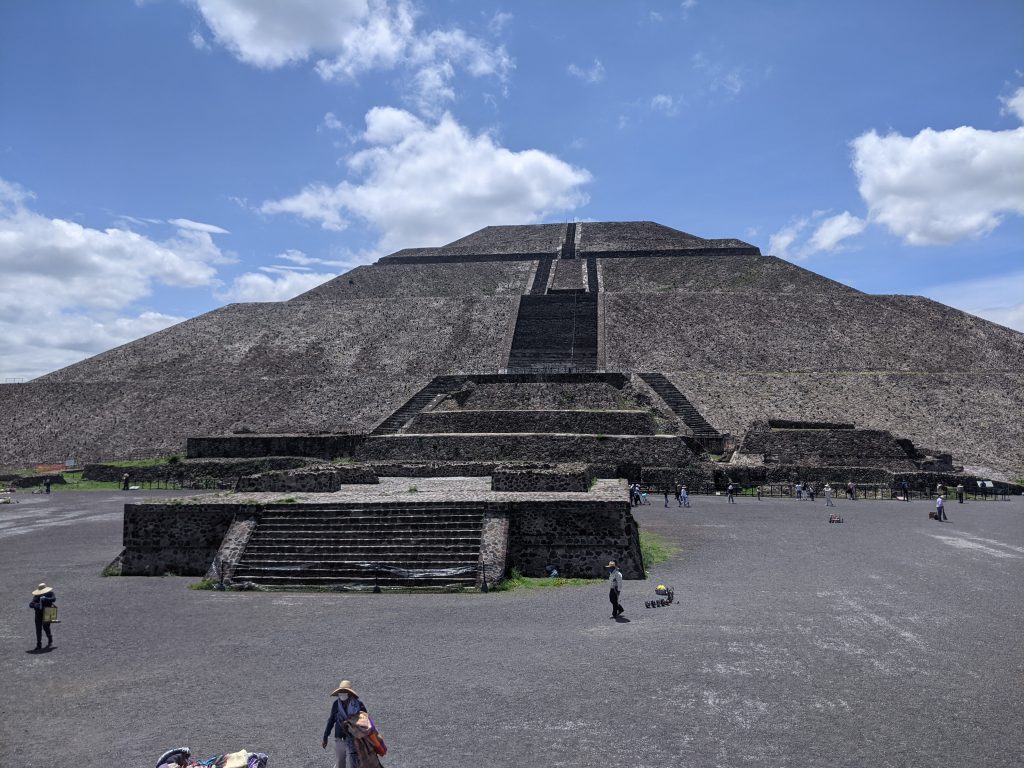
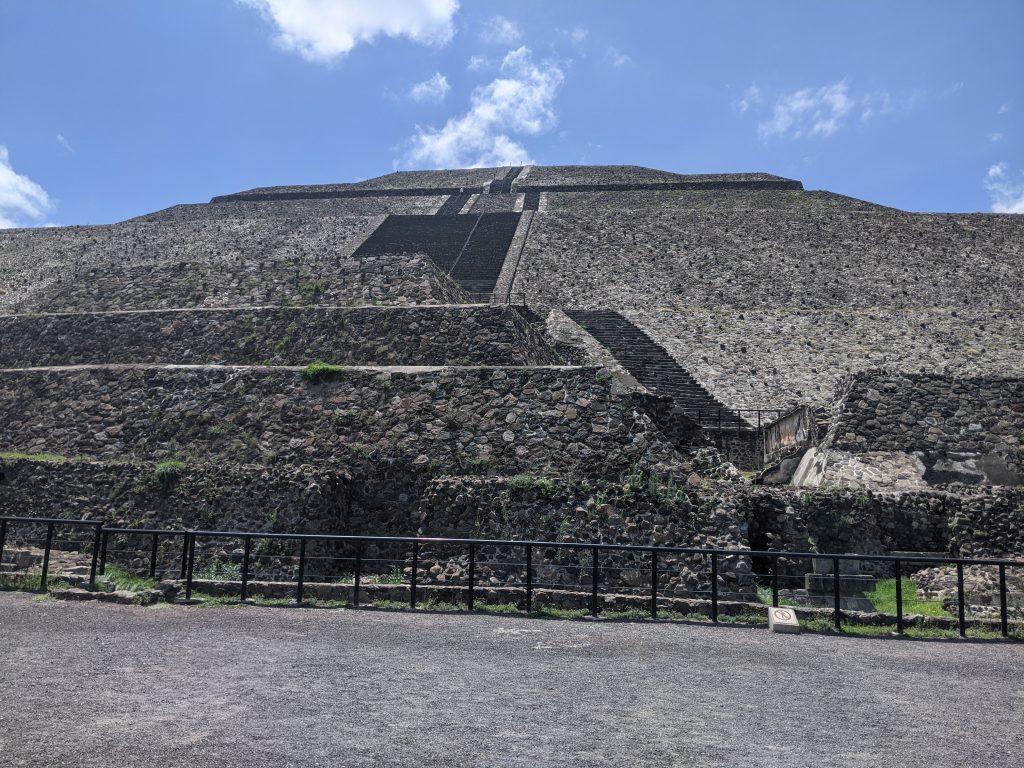
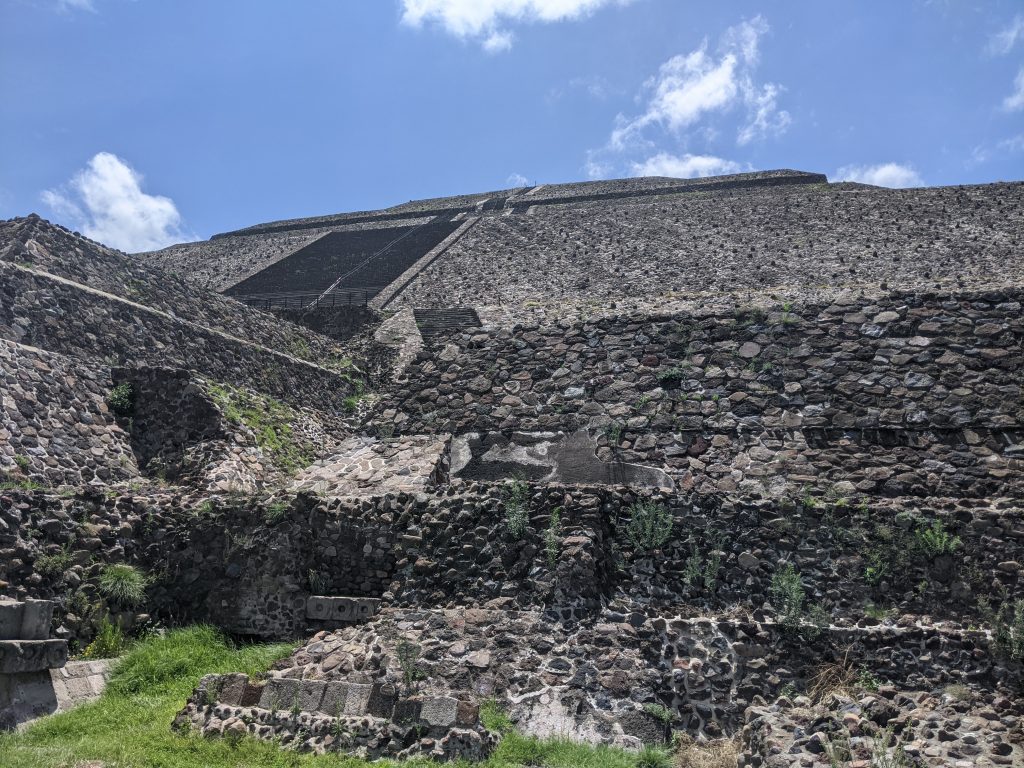
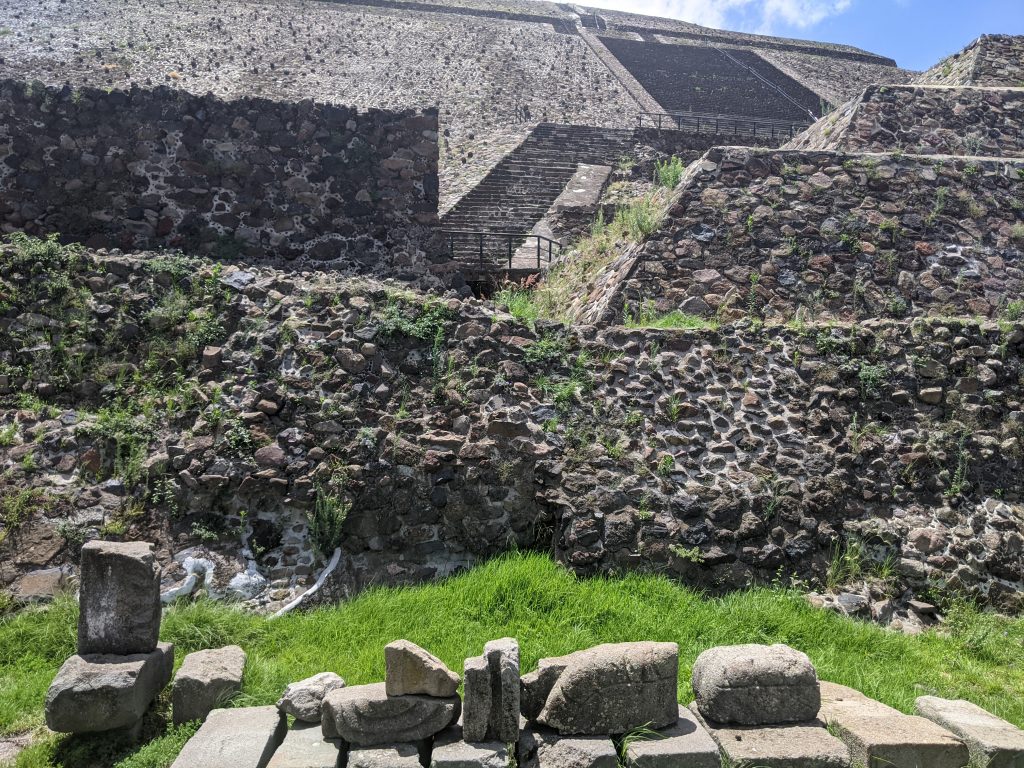
One of the few pieces of artwork that still remains at the site.
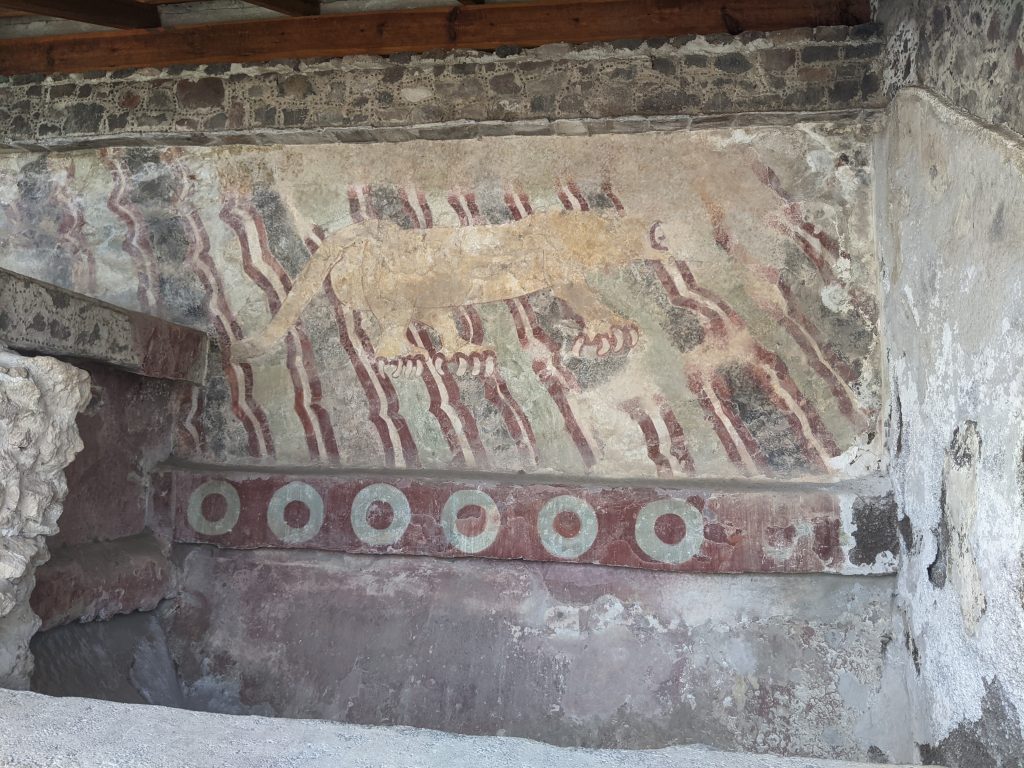
Getting closer to the smaller Piramide de la Luna.
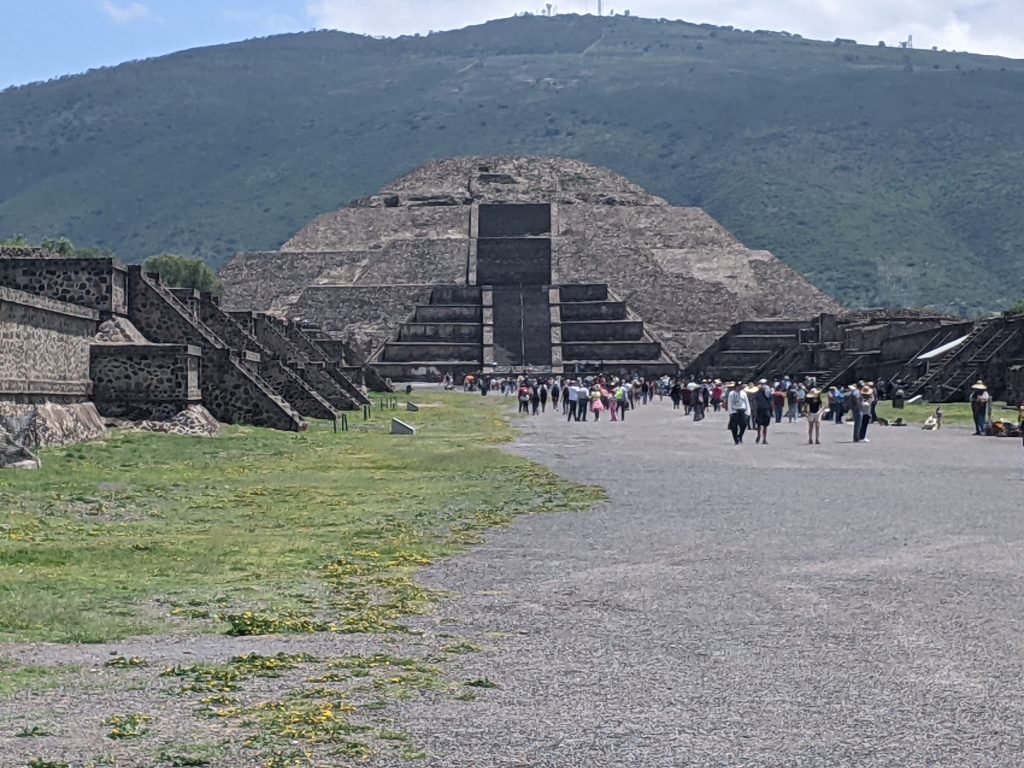
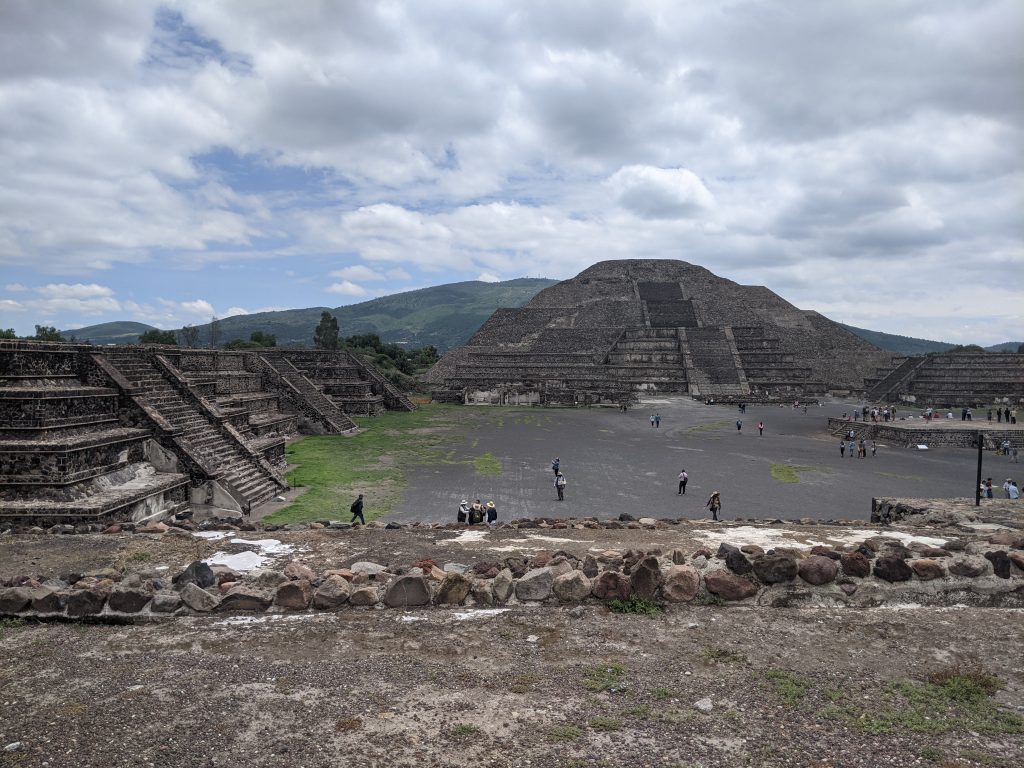
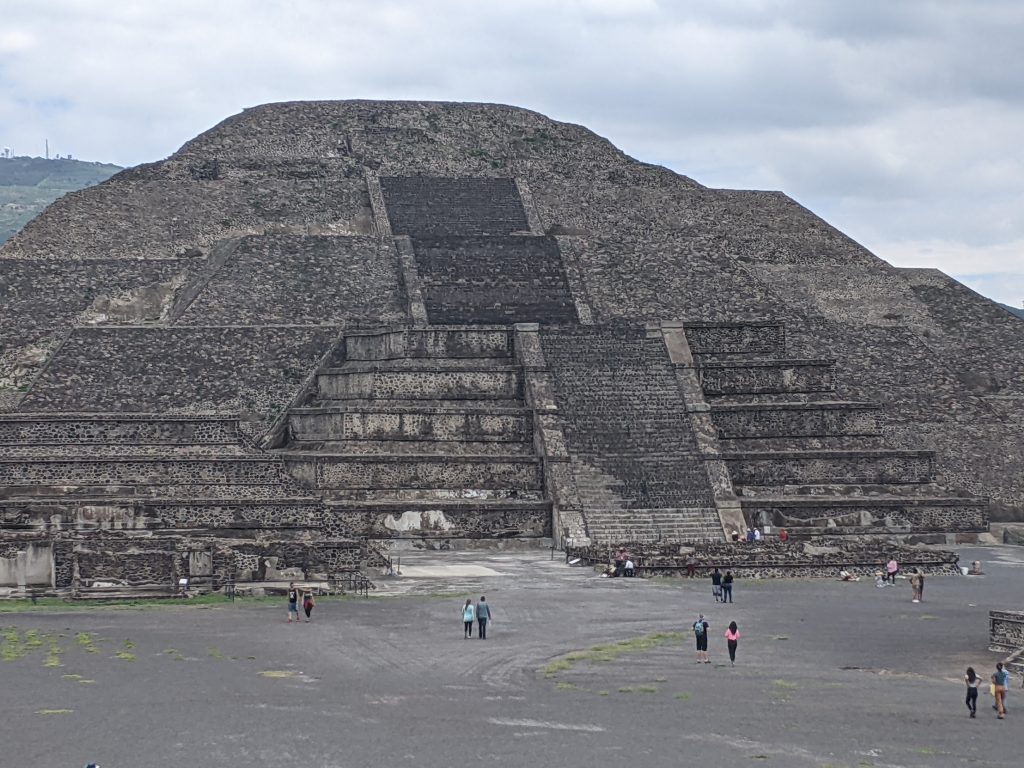
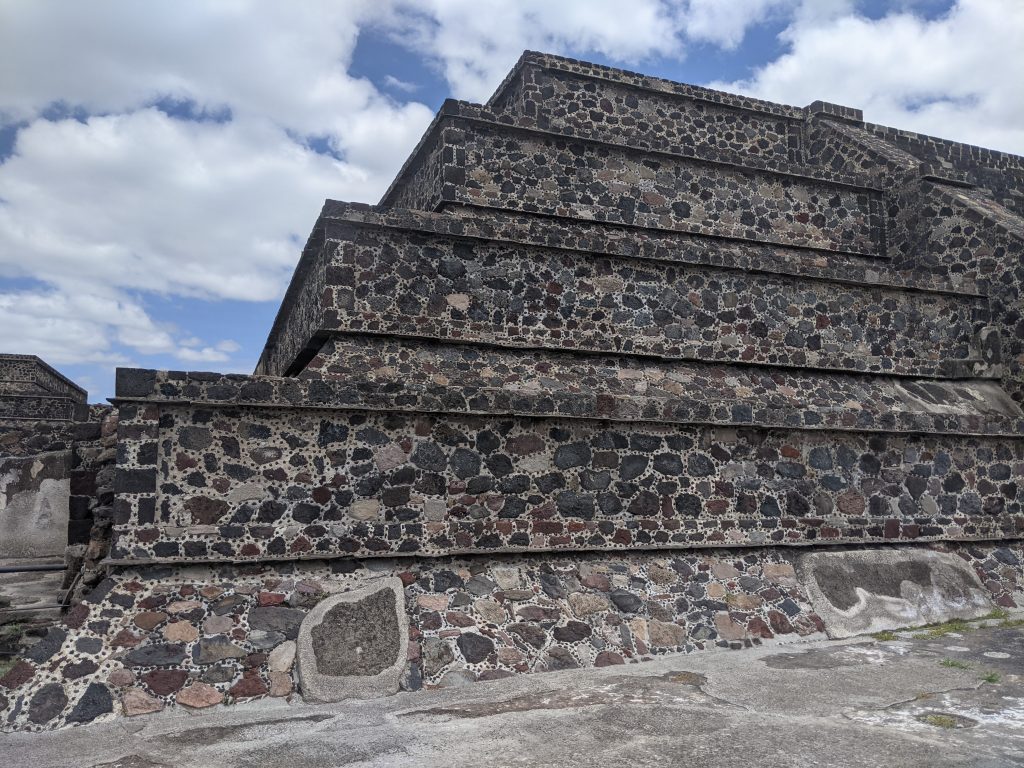
Some of the smaller structures surrounding the Piramide de la Luna.
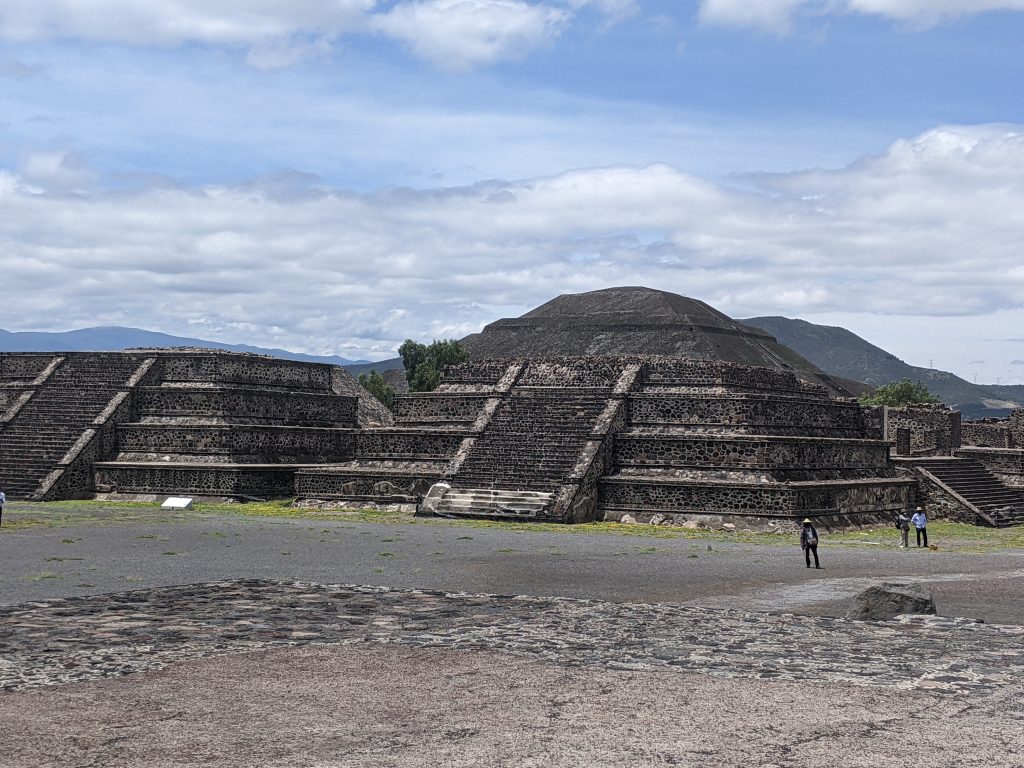
Looking back at the Piramide del Sol which is over 1km away.
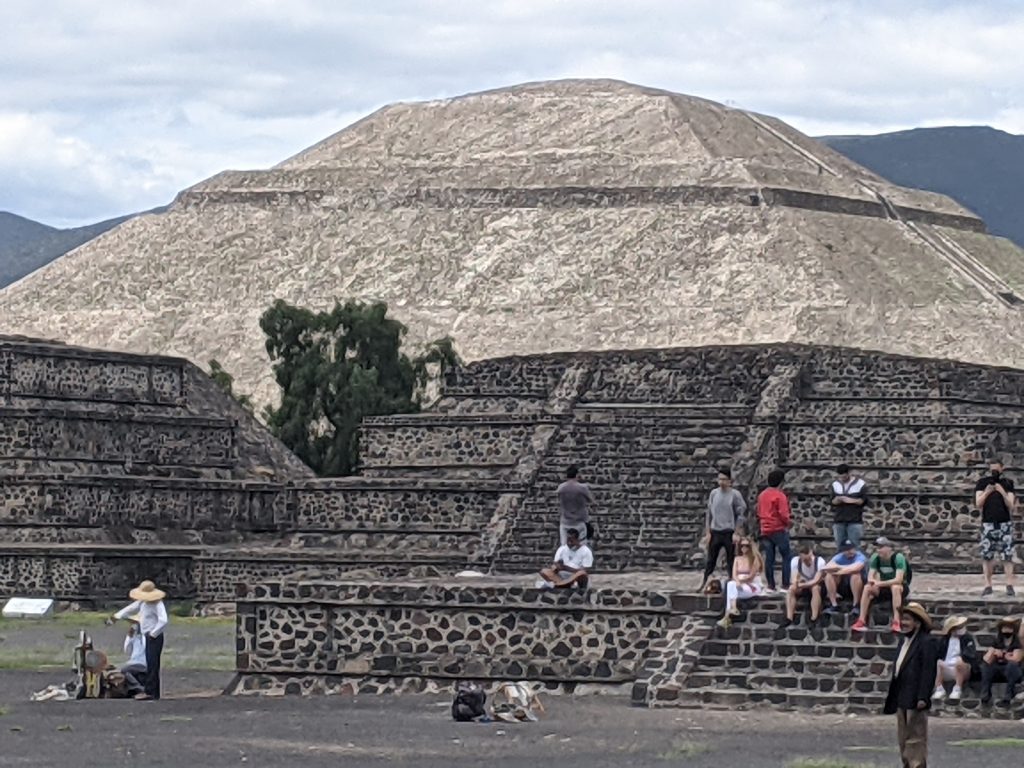
Another view back at the Piramide del Sol showing the long Calzada de los Muertes that connects everything.
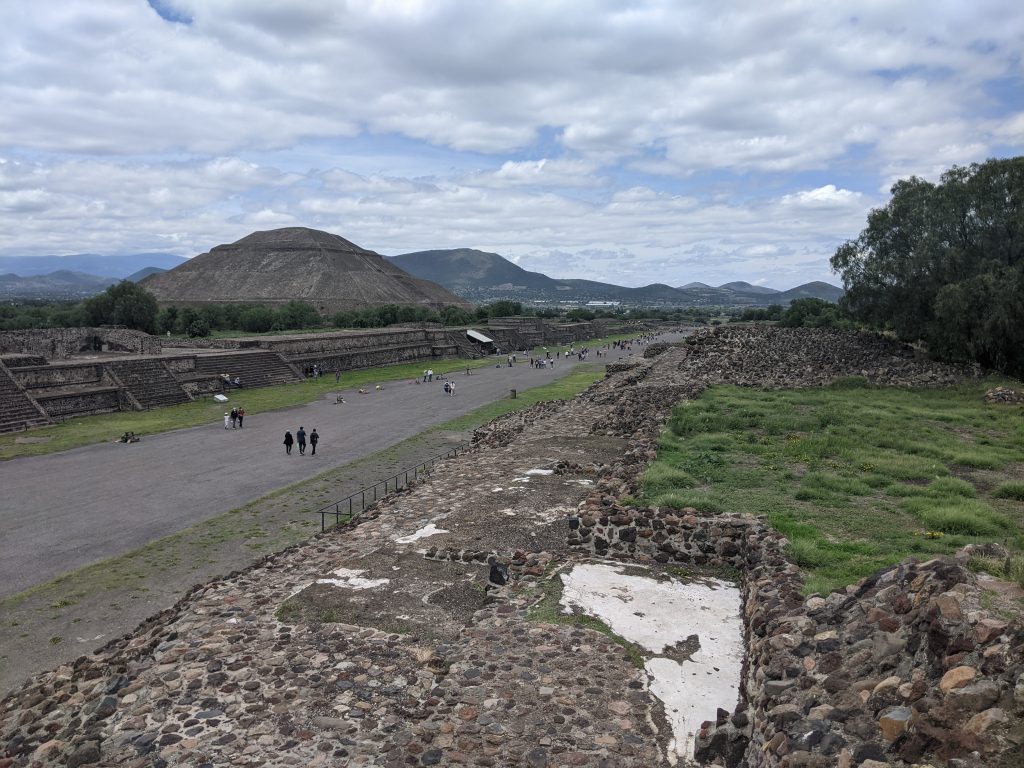
Some roofed royal living quarters.
